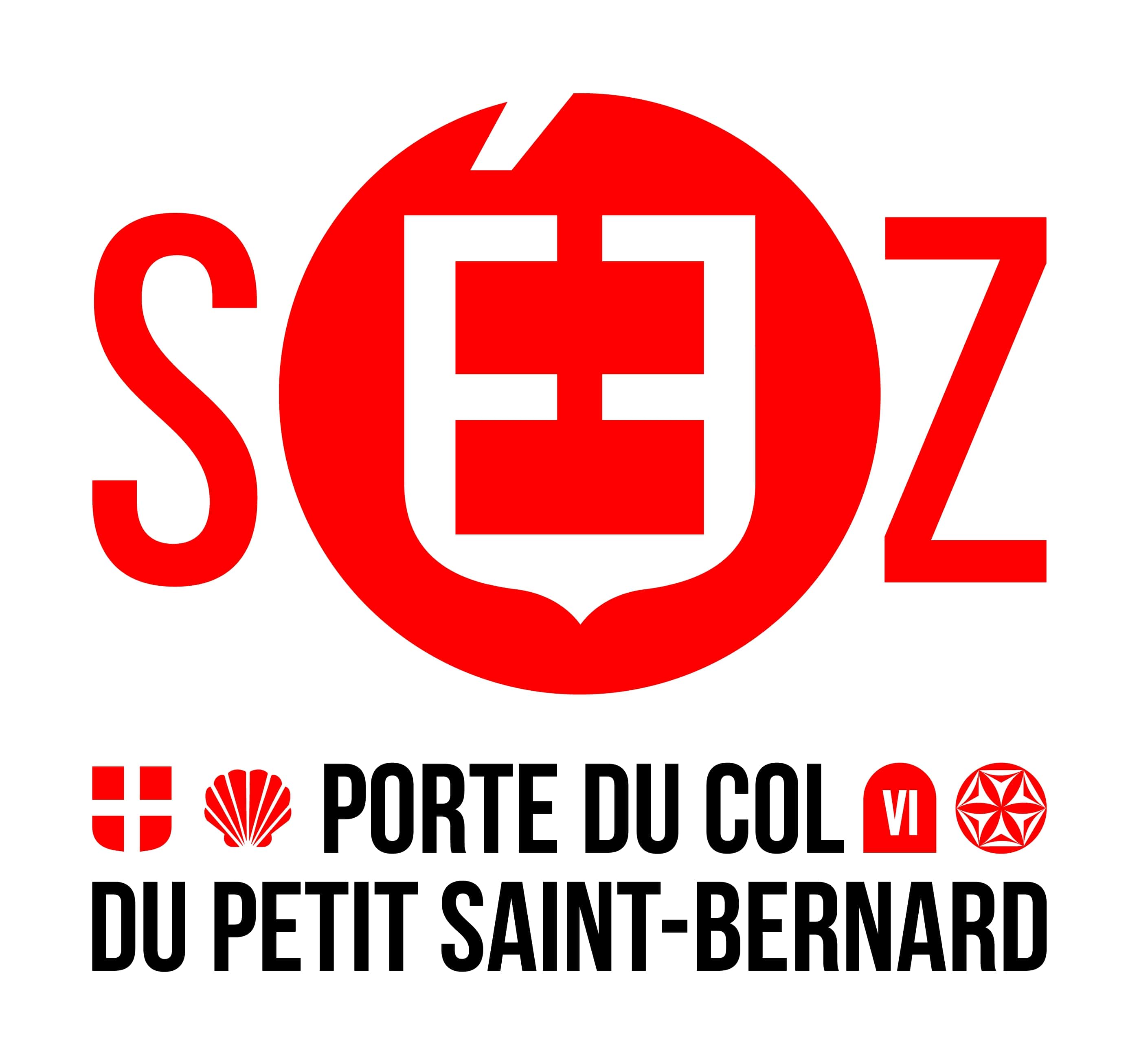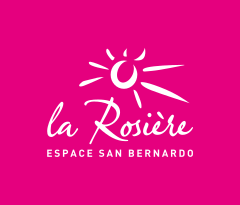Bike from La Rosière
Bike from La Rosière
Hard
Difficulty21,5km
Distance+688m
Positive Elevation-1154m
Negative ElevationEmbed this item to access it offline
Between La Rosière and La Thuile, along mountains that welcome skiers during the winter, there is a cross-border itinerary dedicated to trained and experienced cyclists, which runs along beautiful tracks and paths, crosses forests and alpine meadows and offers precious panoramic points.
An energised ride through nature that also stimulates the mind: there are many stops along the way worth taking to fill your eyes with culture and beauty.
An energised ride through nature that also stimulates the mind: there are many stops along the way worth taking to fill your eyes with culture and beauty.
Description
Please note: in 2024, due to work on the Chardonnet chairlift, the mountain bike ascent from La Rosière to the Petit Saint-Bernard pass will take place on the D1090. At the Petit-Saint-Bernard Hospice, turn right towards the Bellecombe 1 lift, where you will find the original route.
The normal route is as follows.
Leaving the car in the village centre, take the uphill road towards Les Chavonnes Hautes and the golf area. Follow the dirt road uphill for about 6.5 kilometres and 500 metres of altitude difference, crossing areas of alpine pastures and passing through the Roc Noir area, you will reach the 2,383 m Col de la Traversette. From here, there is a very steep and demanding downhill section, first on a farm track and then on a path, which runs alongside the Chardonnet chairlift. Once near the departure station of the Bellecombe 1 ski lift, turn right and follow the track uphill until you pass the Bellecombe lakes, where you turn left and follow the track uphill to the arrival station of the ski lift. From here, turn left and follow the track uphill from Lake Longet until it meets the farm road that descends from the Belvedere pass. Follow the downhill track until reaching the farm road that climbs from the Petit St Bernard pass at Lake Verney. Keep to the right and follow the track that takes the cyclist to La Thuile in about 9 km. The last section of the route follows the tracks of the bike park.
The entire route is challenging due to the presence of both uphill and downhill sections with high gradients.
The normal route is as follows.
Leaving the car in the village centre, take the uphill road towards Les Chavonnes Hautes and the golf area. Follow the dirt road uphill for about 6.5 kilometres and 500 metres of altitude difference, crossing areas of alpine pastures and passing through the Roc Noir area, you will reach the 2,383 m Col de la Traversette. From here, there is a very steep and demanding downhill section, first on a farm track and then on a path, which runs alongside the Chardonnet chairlift. Once near the departure station of the Bellecombe 1 ski lift, turn right and follow the track uphill until you pass the Bellecombe lakes, where you turn left and follow the track uphill to the arrival station of the ski lift. From here, turn left and follow the track uphill from Lake Longet until it meets the farm road that descends from the Belvedere pass. Follow the downhill track until reaching the farm road that climbs from the Petit St Bernard pass at Lake Verney. Keep to the right and follow the track that takes the cyclist to La Thuile in about 9 km. The last section of the route follows the tracks of the bike park.
The entire route is challenging due to the presence of both uphill and downhill sections with high gradients.
Departure : La Rosière
Arrival : La Thuile
5 points of interest

Small patrimony
The four winds and statue of Saint Bernard of Menthon
Just beyond the hospice, overlooking the French side of the Petit St Bernard Pass, is a small stone construction resembling a garret with four niches, one on each side. It was built by Abbé Chanoux, who was rector of the hospice for 49 years from 1860 until his death, to meditate while sheltered from the wind, regardless of its direction. It was later used by customs officers as a lookout post for smugglers coming up from the valley.
Next to it is an imposing statue of Saint Bernard of Menton placed in 1902 by Abbot Chanoux on a tuff pedestal over 12 m high. The figure of Saint Bernard is fundamental to the history of the Col: it was he who in 1034 received the mandate to build the hospice. The saint, depicted with his index finger pointing towards Italy to indicate the way to cross the pass, embodied, then as now, the essence of hospitality. During the Second World War, the finger was lost, leaving an outstretched fist in a more vengeful-looking gesture.
Next to it is an imposing statue of Saint Bernard of Menton placed in 1902 by Abbot Chanoux on a tuff pedestal over 12 m high. The figure of Saint Bernard is fundamental to the history of the Col: it was he who in 1034 received the mandate to build the hospice. The saint, depicted with his index finger pointing towards Italy to indicate the way to cross the pass, embodied, then as now, the essence of hospitality. During the Second World War, the finger was lost, leaving an outstretched fist in a more vengeful-looking gesture.

Small patrimony
Little Saint Bernard hospice
The Petit-Saint-Bernard hospice remains today a symbol of hospitality for all those who travel this route through the mountains. Its history is linked to the figure of Saint Bernard, archdeacon of Aosta, who around 1050 had a hospice and church built and served by religious monks dependent on the monastery of Saint Peter in the Swiss Valais.
The hospice was entrusted in 1113 to the order of the monks of Saint-Gilles of Verrès. A new hospice was built at the behest of Saint Peter II, archbishop of the Tarentaise Valley, a little further south, in its present location.
The building experienced alternating periods of decay and prosperity. From 1752, its name was linked to the Order of Saint Maurice and Saint Lazarus, and the crusader emblem of the Mauritian Order appeared on the façade.
In 1860, Abbot Chanoux arrived and contributed to guaranteeing hospitality for 50 years, both in summer and winter. In 1920, the hospice recorded a record number of passages, over 21,000 of which more than 500 in winter!
During the Second World War, the building was devastated and lay in ruins for a long time. Since the summer of 1995, thanks to cooperation between Italian and French Rotary clubs, a renovated and equipped hospice with a restaurant, rooms and tourist information point has once again become the soul of the Petit-Saint-Bernard Pass.
The hospice was entrusted in 1113 to the order of the monks of Saint-Gilles of Verrès. A new hospice was built at the behest of Saint Peter II, archbishop of the Tarentaise Valley, a little further south, in its present location.
The building experienced alternating periods of decay and prosperity. From 1752, its name was linked to the Order of Saint Maurice and Saint Lazarus, and the crusader emblem of the Mauritian Order appeared on the façade.
In 1860, Abbot Chanoux arrived and contributed to guaranteeing hospitality for 50 years, both in summer and winter. In 1920, the hospice recorded a record number of passages, over 21,000 of which more than 500 in winter!
During the Second World War, the building was devastated and lay in ruins for a long time. Since the summer of 1995, thanks to cooperation between Italian and French Rotary clubs, a renovated and equipped hospice with a restaurant, rooms and tourist information point has once again become the soul of the Petit-Saint-Bernard Pass.

Flora
Pioneer species
In high-altitude environments, the presence of trees and bushes is greatly reduced: soil and climate conditions are prohibitive and only very resistant species manage to vegetate. We speak of pioneer species, i.e. plant species capable of colonising extremely poor soils. The name alone makes it clear how these courageous plants do not fear water shortages, lack of humus and nutrients, and the proximity of rocks that hinder their roots.
Their presence is invaluable: they have the ability to modify the soil on which they grow, making it more suitable for other, more demanding species that will later settle there.
Among the trees, the Larch (Larix decidua Mill.) is certainly the easiest to spot at high altitudes, as an isolated, twisted specimen, or in small groups called micro-collectives capable of supporting each other in the struggle for survival. The caducity of its leaves makes it even more resistant to low winter temperatures.
The larch has been observed up to 2570 m in Val d'Ayas (Valle d'Aosta), but historical reports by Abbot J. Henry place it in Valpelline in a small group of dwarf specimens at around 2800-2950 m.
Among the shrubs, the common juniper (Juniperus communis L.) is capable of going even higher than 3500 m, although it prefers to stay in the subalpine plane, stopping at around 2800 m. Its bushy habit, often prostrate on the ground, with the leaves very close to the branches, helps it to vegetate in very selective environments where few other plants can survive.
Their presence is invaluable: they have the ability to modify the soil on which they grow, making it more suitable for other, more demanding species that will later settle there.
Among the trees, the Larch (Larix decidua Mill.) is certainly the easiest to spot at high altitudes, as an isolated, twisted specimen, or in small groups called micro-collectives capable of supporting each other in the struggle for survival. The caducity of its leaves makes it even more resistant to low winter temperatures.
The larch has been observed up to 2570 m in Val d'Ayas (Valle d'Aosta), but historical reports by Abbot J. Henry place it in Valpelline in a small group of dwarf specimens at around 2800-2950 m.
Among the shrubs, the common juniper (Juniperus communis L.) is capable of going even higher than 3500 m, although it prefers to stay in the subalpine plane, stopping at around 2800 m. Its bushy habit, often prostrate on the ground, with the leaves very close to the branches, helps it to vegetate in very selective environments where few other plants can survive.

Panorama
The Chavanne Valley
On the orographic left of the stream that descends from Lac Verney called Dora del Verney just above the small village of Pont Serrand is the Vallone di Chavanne that leads up to the pass of the same name (2603 m) from where you can reach Val Veny and admire a remarkable panorama of Mont Blanc and beyond!
The gentle ascent of the valley is accompanied by wide slopes where herds of cows graze in summer.
Transhumance is still practised in Valle d'Aosta in summer, with cows grazing at high altitudes typically from San Giovanni (24 June) to San Michele (29 September). The typical cattle breeds of the region - Pezzata Rossa, Pezzata Nera and Castana - are rustic, agile, with a petite build, suited to life in the mountains. Milking is carried out in the high-altitude stables, mostly manually, and the milk is processed daily in small cheese dairies to obtain dairy products that offer special organoleptic sensations due to the quality and variety of the mountain fodder.
At the pass, there are the remains of ancient fortifications that testify to the strategic importance of the valley, which was considered an alternative and doubling route of the Little St. Bernard Pass as well as an access point to the Val Veny, an important connection route between the Tarantaise and Courmayeur via the col de la Seigne.
Historical documents attest to military use from the mid-1700s until the 20th century with the presence of a concrete shelter structure close to the back of the pass, but a little
further upstream to the north-east on the so-called Mont Fortin, there are the remains of a rectangular masonry barrack. All around are the faint remains of dry-stone entrenchments and earth ditches that form a true highland field fortification, a settlement area for the troops, eventually sent to garrison the fortifications, and certainly frequented and remodelled in later periods as a rural and pastoral station.
The gentle ascent of the valley is accompanied by wide slopes where herds of cows graze in summer.
Transhumance is still practised in Valle d'Aosta in summer, with cows grazing at high altitudes typically from San Giovanni (24 June) to San Michele (29 September). The typical cattle breeds of the region - Pezzata Rossa, Pezzata Nera and Castana - are rustic, agile, with a petite build, suited to life in the mountains. Milking is carried out in the high-altitude stables, mostly manually, and the milk is processed daily in small cheese dairies to obtain dairy products that offer special organoleptic sensations due to the quality and variety of the mountain fodder.
At the pass, there are the remains of ancient fortifications that testify to the strategic importance of the valley, which was considered an alternative and doubling route of the Little St. Bernard Pass as well as an access point to the Val Veny, an important connection route between the Tarantaise and Courmayeur via the col de la Seigne.
Historical documents attest to military use from the mid-1700s until the 20th century with the presence of a concrete shelter structure close to the back of the pass, but a little
further upstream to the north-east on the so-called Mont Fortin, there are the remains of a rectangular masonry barrack. All around are the faint remains of dry-stone entrenchments and earth ditches that form a true highland field fortification, a settlement area for the troops, eventually sent to garrison the fortifications, and certainly frequented and remodelled in later periods as a rural and pastoral station.

Panorama
The faces of La Thuile from the past to today
Seen from above, the village of La Thuile tells a lot about itself. It is located at the confluence of two torrents, one with clear waters, the Dora di Verney that arrives from the Piccolo San Bernardo pass, and the other with glacial melt waters, the Dora del Ruitor that descends from the glacier of the same name.
The houses are traditionally gathered in small nuclei, surrounded by meadows that are still mowed or left to graze. This arrangement tells well how mountain people once lived a strong sense of closeness, sharing and mutual aid necessary to compensate for daily difficulties.
Over the years, La Thuile has undergone different forms of economic development that have left their mark, which are still visible today: from a mountain village dedicated to livestock breeding and agriculture, it became a mining village thanks to the presence of important anthracite deposits, cultivated in a modest manner since the second half of the 18th century and throughout the 19th century. It was from the beginning of the 20th century that mining development in La Thuile became industrial, with various exploitation points with various levels of extraction, cableways, internal and external handling systems, administrative buildings, accommodation, technical infrastructure. After the Second World War, mining became increasingly uneconomic and was abandoned altogether in 1965.
The transition from black gold (coal) to white gold (winter tourism) began as early as 1948 with the first steps towards becoming a well-equipped winter resort, when mining began to decline and a popular shareholding thought of skiing as an alternative to guarantee a future for the new generations, building the first chairlift. From then on, a new face began to take shape for the resort linked to tourism: ski slopes, ski lifts, hotels and second homes began to change the face of the village, bringing it to its present status as a major resort with an international ski area - the Espace San Bernardo - linking La Thuile with the French resort of La Rosière.
The houses are traditionally gathered in small nuclei, surrounded by meadows that are still mowed or left to graze. This arrangement tells well how mountain people once lived a strong sense of closeness, sharing and mutual aid necessary to compensate for daily difficulties.
Over the years, La Thuile has undergone different forms of economic development that have left their mark, which are still visible today: from a mountain village dedicated to livestock breeding and agriculture, it became a mining village thanks to the presence of important anthracite deposits, cultivated in a modest manner since the second half of the 18th century and throughout the 19th century. It was from the beginning of the 20th century that mining development in La Thuile became industrial, with various exploitation points with various levels of extraction, cableways, internal and external handling systems, administrative buildings, accommodation, technical infrastructure. After the Second World War, mining became increasingly uneconomic and was abandoned altogether in 1965.
The transition from black gold (coal) to white gold (winter tourism) began as early as 1948 with the first steps towards becoming a well-equipped winter resort, when mining began to decline and a popular shareholding thought of skiing as an alternative to guarantee a future for the new generations, building the first chairlift. From then on, a new face began to take shape for the resort linked to tourism: ski slopes, ski lifts, hotels and second homes began to change the face of the village, bringing it to its present status as a major resort with an international ski area - the Espace San Bernardo - linking La Thuile with the French resort of La Rosière.
Altimetric profile
Access and parking
The route runs between La Rosière in France and La Thuile in Italy
Arriving from France: D1090 as far as La Rosière.
Arriving from France: D1090 as far as La Rosière.
Report a problem or an error
If you have found an error on this page or if you have noticed any problems during your hike, please report them to us here:
 Ufficio del Turismo / Office du Tourisme La Thuile
Ufficio del Turismo / Office du Tourisme La Thuile  Office de Tourisme Séez
Office de Tourisme Séez  Office du Tourisme de la Rosière Montvalezan
Office du Tourisme de la Rosière Montvalezan Espace San Bernardo ski
Espace San Bernardo ski